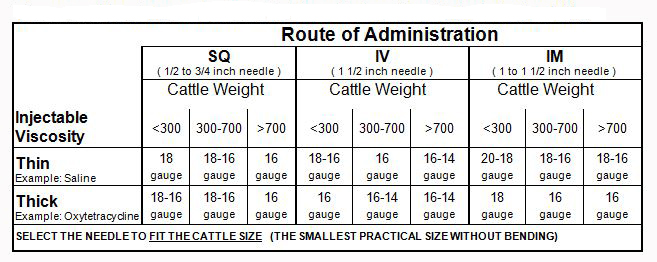
Rob Eirich, UNL Extension Educator and Nebraska Director of BQA
Cattlemen have demonstrated a commitment to animal health through well vaccination programs developed in relationship with their veterinarian. All operations find a time when animals must be treated with an antibiotic after disease diagnosis. At that time, producers need to follow important antibiotic use guidelines established through the National Beef Quality Assurance program.
Selection of an animal health product is the first step in antibiotic use. The USDA Food and Drug Administration require that all animal health products be labeled for proper usage. When selecting a product, veterinarians and producers must take into consideration cause for treatment, dosage, method of administration, and withdrawal time.
It is required that the label be followed and all extra-label drug use must have a veterinarian prescription. BQA also recommends using antibiotics that are administered subcutaneous (SQ) – under the skin, intranasal (IN), oral, or intravenous (IV) – in the vein. Only use intramuscular (IM) – in the muscle injections when required by the product label. A strong Veterinarian, Client, Patient Relationship is highly valuable when selecting products.
When administering product use clean and sterile syringes and needles. Use proper needle size based on animal size, route of administration, and viscosity of product. The most common needle sizes are 16 or 18 gauge, length 1/2” to 1”. Needles should be replaced if bent, damaged, or dull and after every 10-15 injections. Here is a link to a table can assist in needle selection http://go.unl.edu/yxcq.
All injections should be administered in the triangle area located in the neck region. If administering intramuscularly (IM) only 10 cc per injection site is recommended, as well as multiple sites two to four inches apart. Using proper handling and restraint methods will assist in administering animal health products correctly.
Producers must always maintain animal health records. These records should contain animal identification, diagnosis, treatment date, product used, location and route of administration, dosage, and withdrawal time and date. These records should be kept on file for a minimum of three years.
Cattlemen strive to prevent animal diseases through strong Herd Health and Vaccination Protocols, but when diagnosis requires treatment they are committed to following proper antibiotic usage.
For more information about Nebraska Beef Quality Assurance or to get BQA certification, contact Rob Eirich, UNL Extension Educator and Nebraska Director of BQA at the UNL Panhandle Research and Extension Center 308.632.1230 or reirich2@unl.edu .